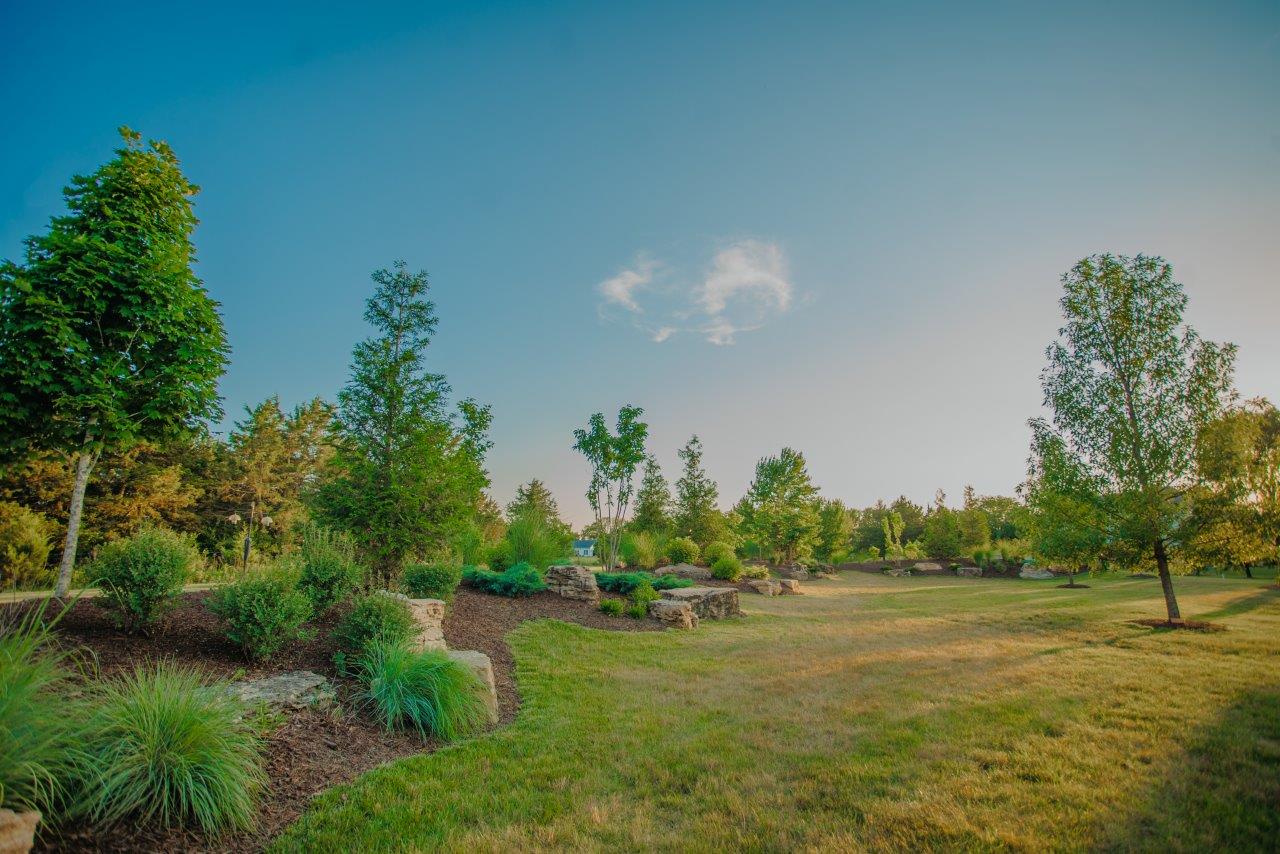When opening a new landscape design, we are often given set criteria for the functionality, budget, and general aesthetic of the space. We then take your vision for the space and apply fundamental principles of landscape design to create functionally beautiful space. As we all know, those six key principles that we focus on are balance, focalization, simplicity, rhythm/line, proportion, and unity. These principles apply to everything from walls and patios to plantings and lawns and are, at their core, what makes a space look appealing. One of the most important tools to utilize these principles in a landscape design is your plantings.
Whether you’re tackling a DIY project at home or renovating an entire campus, plant selection, layout and the starting sizes of your material will determine the longevity and practicality of the landscape over time. While every project is different, we typically spec more mature plants as the starting sizes in our plans for a host of reasons including:
Instant Impact:
One of the ways we apply principles of design is through layering plantings. Creating layers using a variety of heights, widths, colors, and textures builds interest and increases the appeal of a landscape bed. By choosing mature specimens for our installations, we are able to display that layering on day one and gain that curb appeal without having to wait years for it to fill in. A general rule for all new plantings sleep, creep, leap; meaning it takes years for a landscape to become established so having it look good on day one is critical.
Consistent Establishment:
Transplanting/installing new plants is a stressful process for these plants as they acclimate to a new environment. Typically mature will plants have larger root systems that are able withstand short term changes like drought or wet conditions better and give you more time to make any necessary adjustments in your care routine before environmental stress causes them to expire.
Professional Finish:
Mature plants look better than immature plants. Like your teenagers at home, many plants go through an awkward adolescent stage where they can appear thin or gangly. By allowing plants to mature at the nursery, we’re able to correct any deficiencies and ensure a consistent and quality finished product is being installed.
Blending:
Often times we are tasked with adding onto an existing landscape. In these installs, there is no perfect substitute for time. Installing small starter trees and shrubs next to a mature landscape only increases contrast between old and new so we prefer to utilize larger specimens to better blend the additions and give a more cohesive feel to the space.
While every job is different, we find that utilization of larger plants in our projects is essential to provide that quality finish that keeps us snapping pictures of every project we finish, big or small.

